A perusal of our review backlog will show a site-wide fondness for Capcom’s Ace Attorney series. Funnily enough, it’ll also show that each of its Switch-based compilations has been handled by a different writer—no doubt a testament to Phoenix Wright’s popularity and Ace Attorney’s ubiquity among Nintendo fans. At least that would be the case if I weren’t about to hit you with an “objection” to my own setup.
See, my personal familiarity with the franchise has been more general, particularly when stacked against others here who could’ve given you a case-by-case rundown. I’ve only ever fully completed the first game in the series. The times when I’ve delved into it have always been outside of its typical setting, like The Great Ace Attorney and its Professor Layton crossover. As a whole, I’m much more taken with its creator Shu Takumi’s other adventure game effort, Ghost Trick. So why, then, am I stepping in to judge this spin-off double pack, featuring two games that he didn’t even direct, which take place right in the middle of the AA timeline?
That’d be thanks to one Miles Edgeworth.
I always found Nick’s rival to be a more compelling and entertaining character. Maybe it’s his unflappable nature and detailed backstory, maybe it’s the jabot. Maybe it’s the idea of shifting perspective to be on the offense. But after decades of dodging sequels and avoiding learning more about what makes Japanifornia tick, I’ve decided to dive in not as a defense attorney but as a prosecutor. Time to see if that (along with the promise of a previously unlocalized Nintendo DS title) is enough to win me over.
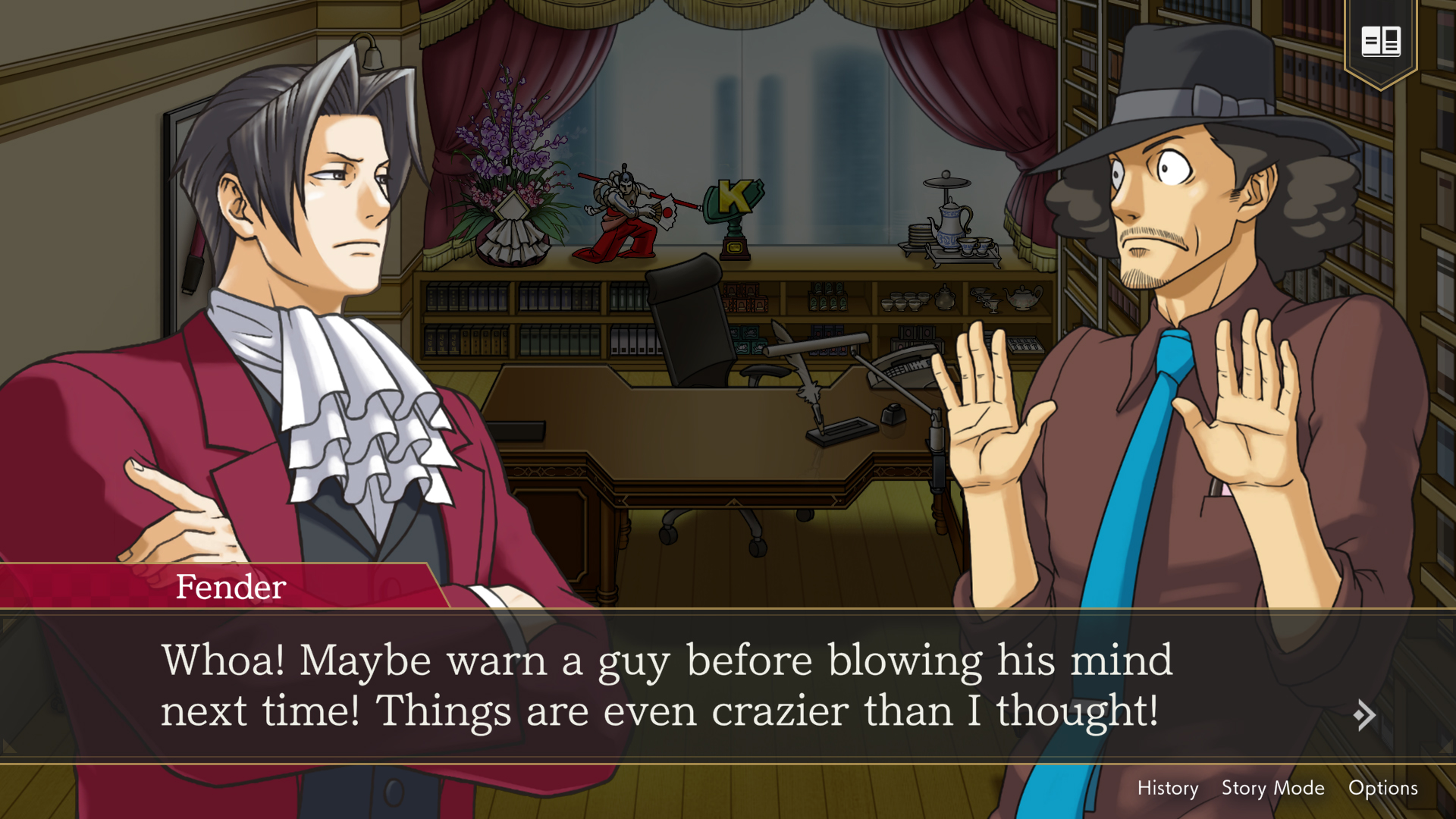
As alluded to, the Ace Attorney Investigations Collection brings together two games originally released on the DS: Ace Attorney Investigations: Miles Edgeworth and what was previously known in fan translation circles as Ace Attorney Investigations 2: Prosecutor’s Path, but now officially carries the subtitle Prosecutor’s Gambit. It’s important to note early on that you’re not doing much courtroom battling in these games either—the “investigations” in the title is definitely intentional.
Rather than prepping for cases and getting to know clients and witnesses, you’ll find yourself at crime scenes, controlling Edgeworth as he gathers evidence. This takes the series into a third-person view rather than its typical first-person perspective, letting you roam around environments. While that sounds like it could have the potential to shake things up, it really doesn’t alter the flow of things too much from a typical Ace Attorney game.
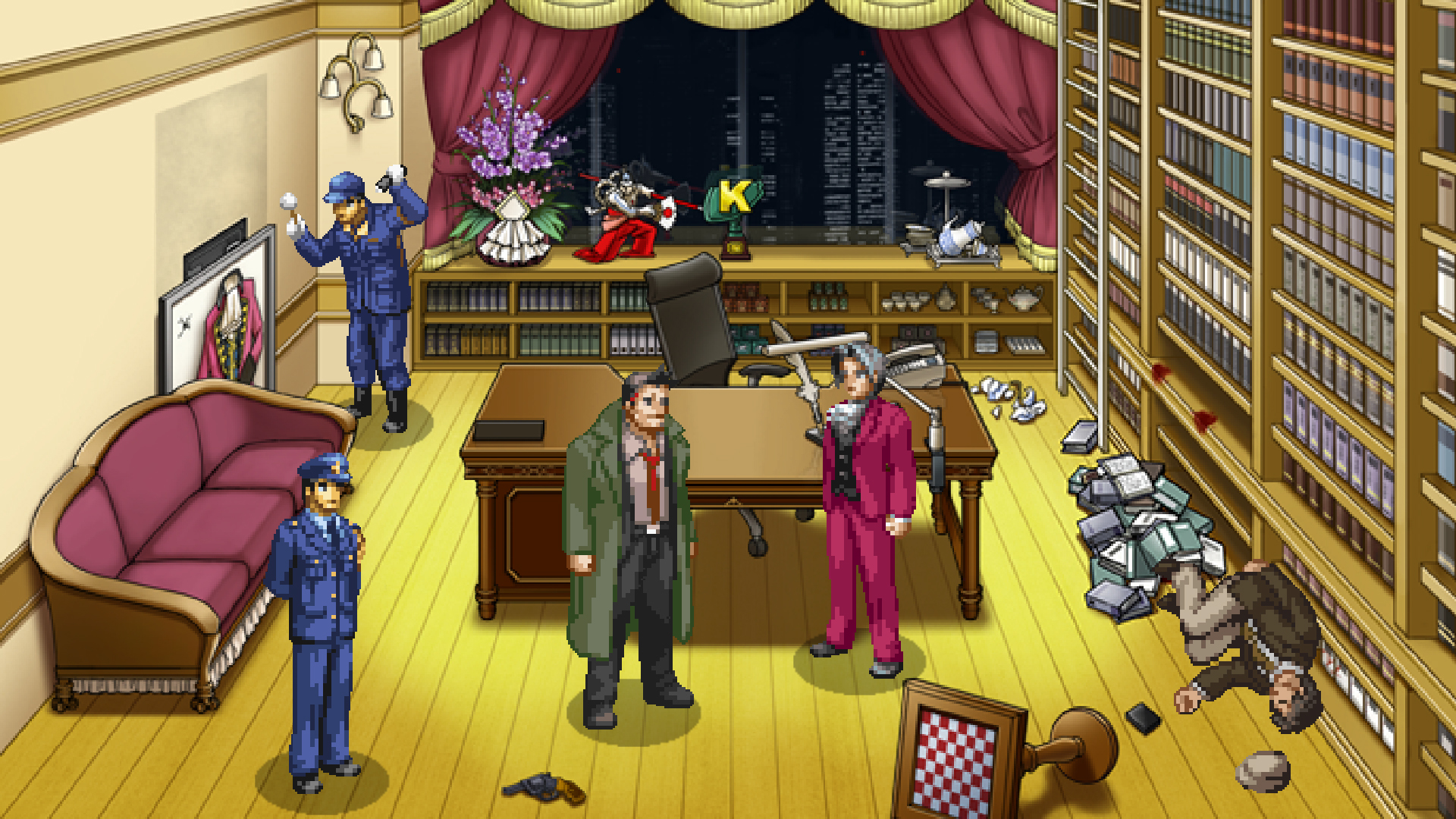
Checking objects or talking to people puts you in the same sorts of dialogue and descriptions, but with Edgeworth as the focal point, there’s definitely a different vibe. Wright was a character presented as a novice who improved alongside the players, even as cases became more complex and witnesses became more withholding and devious, with determination as one of his defining traits. Edgeworth, instead, is a genius, and his exchanges and observations are similarly more collected and even stuffy at times. Even as he’s mellowed out compared to his introduction (or maybe just because Phoenix isn’t around), his ego is more prominent. That’s often balanced out by the companions he has during these investigations, like series mainstay Dick Gumshoe and newcomer to these entries Kay Faraday (effectively his answer to Maya Fey), as well as the typical herd of weirdos that find their way into seemingly every murder case.
Those personalities are essential to maintaining your investment in the games. By removing the courtroom from the equation, something definitely feels lost. Even as you press potential culprits and object to contradictions, the series’ typical structural divide is nonexistent, which can often make cases feel longer on average when they aren’t already longer by design. Not necessarily better or worse, mind you, just longer. That seems intentional as well, as the cases largely come together to carry a singular narrative, making it seem like the developers wanted to up the scale for this entry. I don’t recall any cases I’ve played in the past feeling as drawn out as some of these, making playing through them in sequence quite a gauntlet.
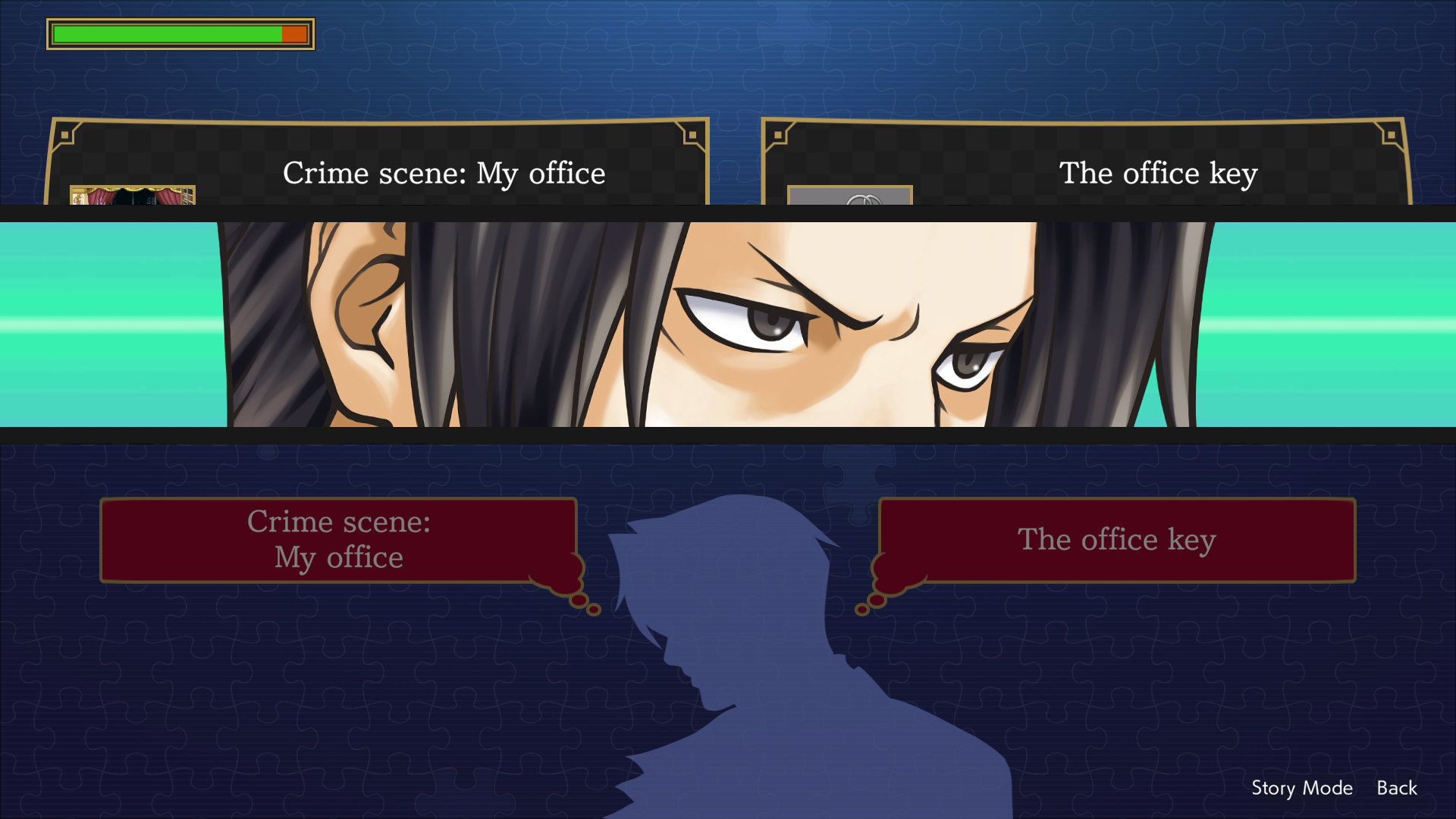
Taking things back to Edgeworth, the game does a decent job of differentiating him from Phoenix in how they process information. Both games present Edgeworth’s observations as puzzle pieces of information. Piecing them together reflects his use of logic and a more practiced perspective, giving a rewarding “Eureka!” when things come together properly. The sequel also introduces Mind Chess as a means to spice up the dialogue trees and reflect the character’s fondness for the game. These sections involve properly manipulating the conversation to cause the “opponent” to give up more information before “attacking” at just the right moment, taking their pieces and advancing your theory or accusation.
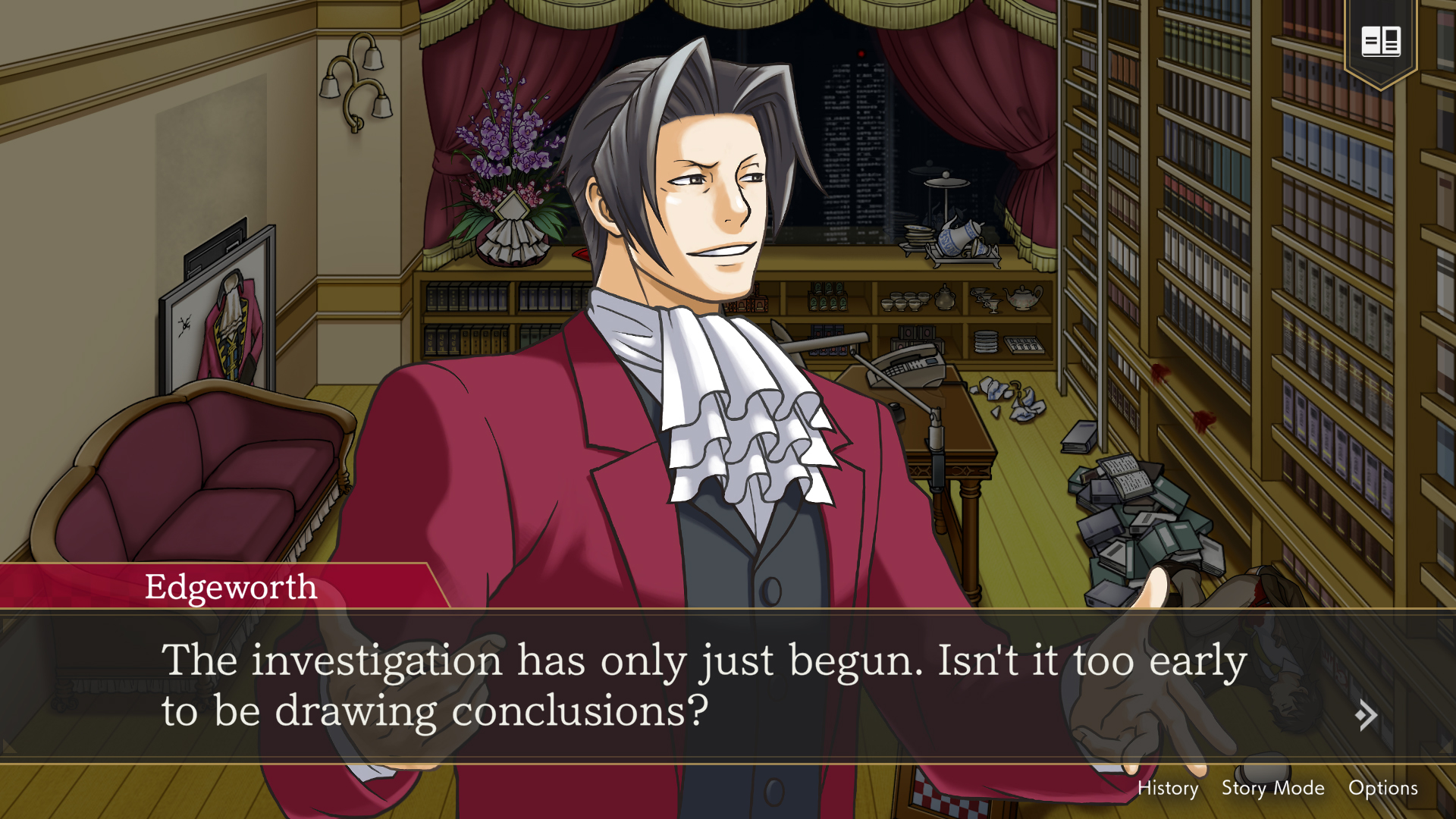
Flavorful as they were, I felt a lot of the moment-to-moment use of those metaphorical systems lacked impact or substance. I’m willing to stomach that to an extent, but what wasn’t so digestible was what I see as the series’ most recurring flaw. Oftentimes, I’d come to a conclusion or solution ahead of the characters, but because I’d personally “skipped a step,” it would make my answers to prompts or attempts to piece the case together wrong. These kinds of flags aren’t exclusive to Ace Attorney, but any time a wrong answer caused a hit to my obtuse health bar, I was reminded why I hadn’t been so diligent with these games despite all their charm and rightfully lauded writing—all still on display here as well.
So, unfortunately, my takeaway here is that the changes to accommodate the different focal character were largely superficial and actually shifted the pacing in a negative direction in some cases. I came into this duology hoping my lack of deeper familiarity would be something of an advantage, letting me take in the series in a fresh way and find that missing piece to make it all click together. I don’t think that’s the proper way to approach this collection after all, but I’m confident longtime fans will get plenty out of having these two stories and their cases readily available.
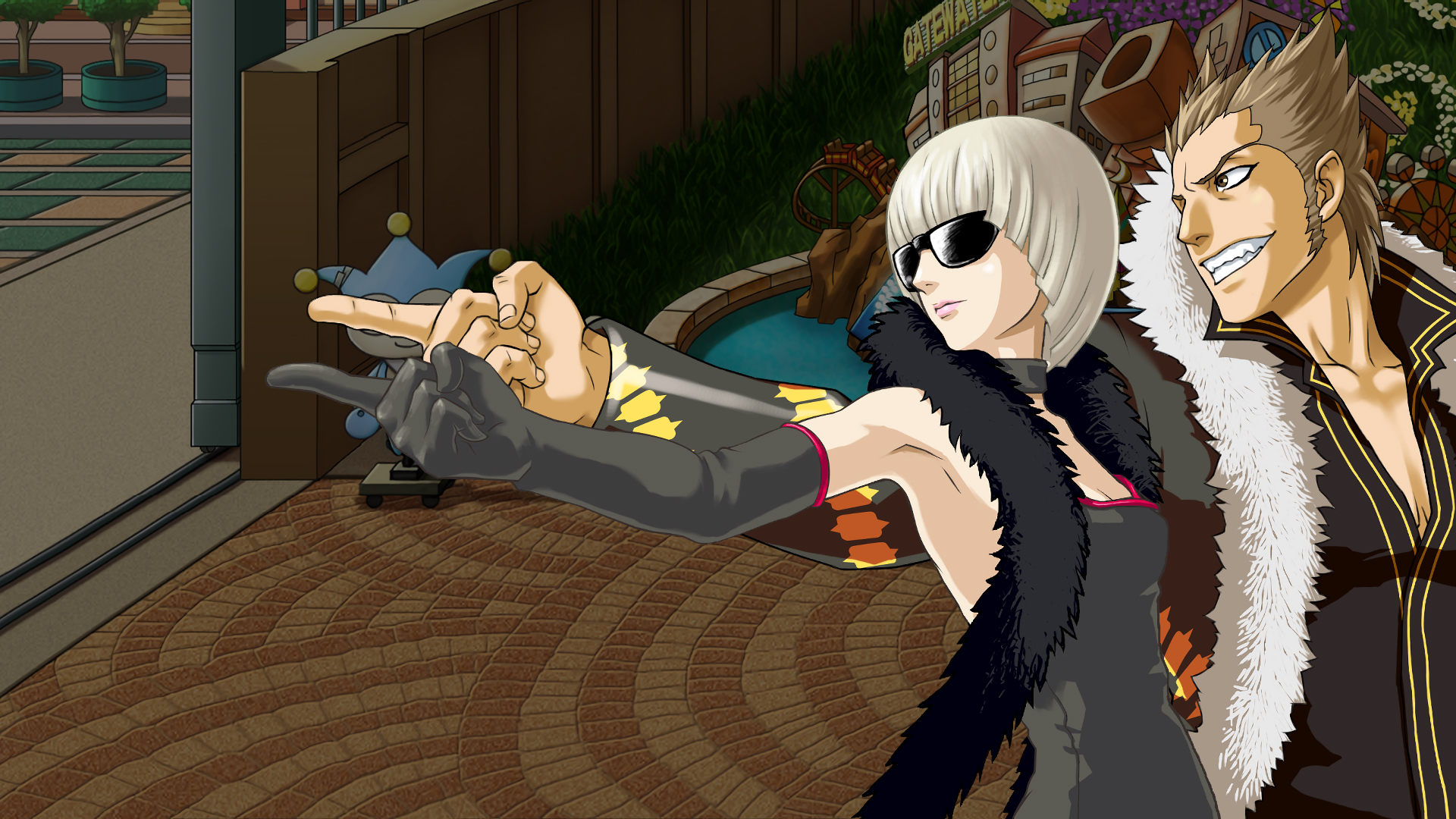
That goes double for Prosecutor’s Gambit. Of the two, it was the one I was more eager to jump into, and it didn’t disappoint on the core fronts. The localization does a fantastic job, as has been tradition with these games, and the nature of the cases and the throughlines that connect them feel more interesting than the first. It also actively changes things up at a few points that were more memorable than anything its predecessor tried.
Maybe I was more used to the game by the time I got to it, or maybe the supporting cast felt more fleshed out and interesting. It’s clear that this is a stronger game as a whole, and I almost wish it had been my entryway to this set, even as a sequel. It still carries some of the flaws of the first (these cases keep getting longer), but I found myself more willing to stomach them thanks to becoming legitimately invested.
Whatever the case, finally having access to this game is the biggest get of this collection, and I thoroughly encourage any fans or preservationists (there’s a physical version for Switch!) to get it on those grounds.
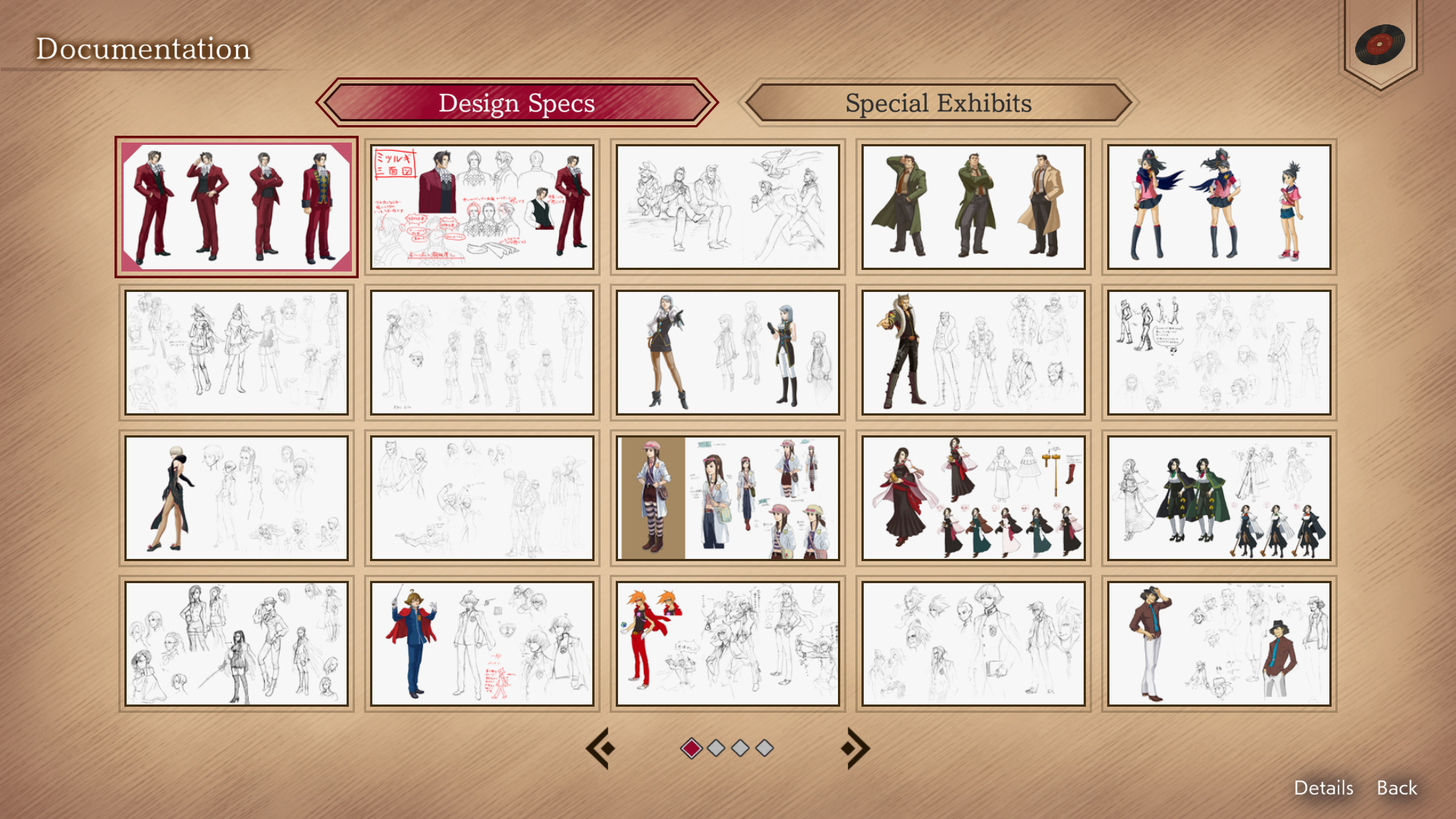
There are some other changes and additions here, the bulk of which are fairly standard for Capcom re-releases and collections at this point. These include in-game achievements, convenience features like being able to pick any case in either game right from the get-go, and galleries for both visuals and music.
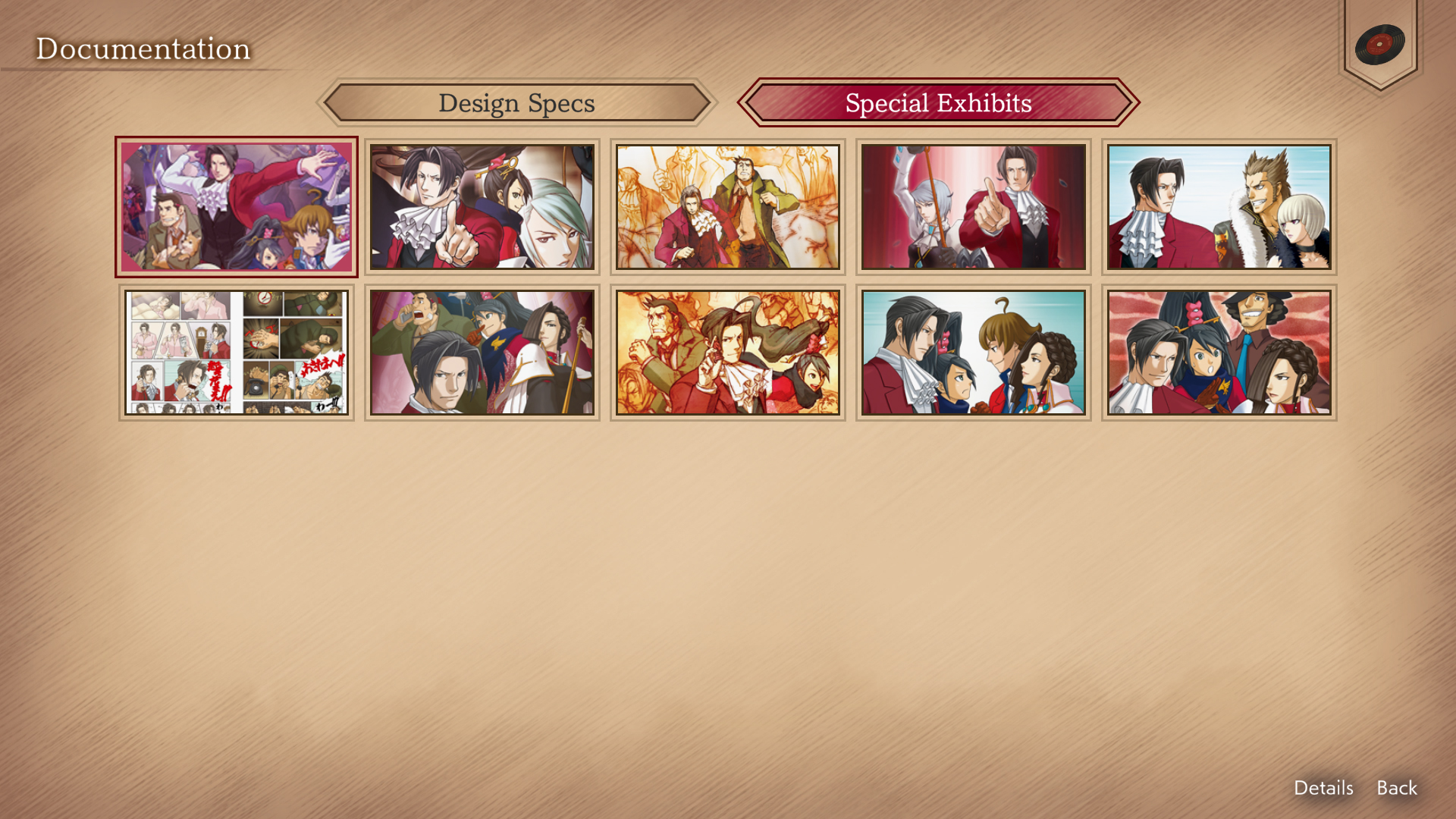
The latter, in particular, is excellent, with OSTs for both games as well as a collection of orchestral arrangements from various soundtrack releases and anniversary concerts—I never said I wasn’t overly familiar with Ace Attorney music. Lastly, and perhaps most impressively, both games have received visual overhauls to use HD, slightly stylized artwork in place of the original handheld sprites. These are fine and have an appeal all their own, but purists (or even those curious to see how things were originally presented and animated) can toggle back to the original pixels from the main menu.
So no, this wasn’t the grand awakening to Ace Attorney fandom I was half hoping for. Rather, it was more of the same but with a different, more erudite lead and some longer-form storytelling with plenty of detective work and witness pressing in between. The inclusion and long overdue translation of Investigations 2 was enough to genuinely pique my interest, and thankfully it didn’t disappoint.
It’s also notable that now the entire series is available on modern consoles! If you, like me, have found yourself curious or tentatively drawn into these likable characters and exciting turnabouts, there’s literally no better time than now to give them all a try.
Leave a Comment

